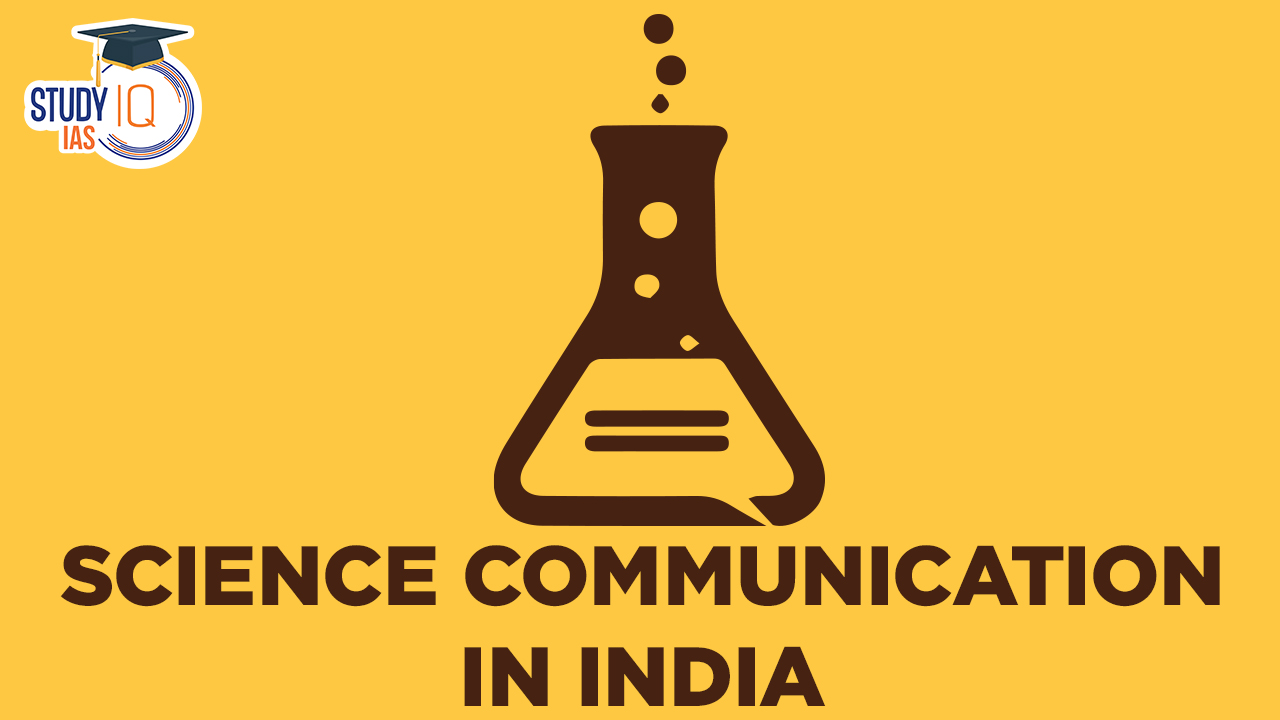Table of Contents
Context: India’s science communication efforts are growing, but lack of training and a national strategy hamper progress.
What Is Science Communication?
- Scientific communication encompasses all forms of communication-related to science. This includes dissemination of scientific work and outcomes, discussions on ethical, societal, or political impacts of science, and direct interactions between scientists and various audiences.
- It’s an umbrella term that extends to exchanging scientific knowledge, institutional outreach, and public engagement with science.
Role of Science Communication for Society in India
- Scientific communication plays a crucial role in fostering a scientific temper and understanding among the public.
- It aids in educating society about scientific developments and their implications, helping people make informed decisions.
- During crises, such as the COVID-19 pandemic, effective science communication is vital for public compliance with health guidelines and understanding the rationale behind them.
We’re now on WhatsApp. Click to Join
Government Efforts for Science Communication
- Publications & Information Directorate (PID) Establishment (1951): Launched under CSIR to publish national science magazines like Vigyan Pragati, Science Reporter, and Science Ki Duniya for spreading scientific knowledge.
- Birla Industrial and Technological Museum (1959): Opened in 1959 to highlight India’s scientific legacy and enhance science education.
- Constitutional Amendment (1976): The 42nd Amendment added Article 51 A (h), mandating every Indian citizen’s duty to foster scientific thinking, humanism, and a spirit of inquiry and reform.
- National Council for Science and Technology Communication (NCSTC) Formation (1980-1985): Created in the sixth Five Year Plan to popularise science across the nation.
- Vigyan Prasar Inception (1989): Established by the Department of Science and Technology for widespread science popularisation.
- CSIR-National Institute of Science Communication and Policy Research Creation (2021): Formed by merging two earlier entities to advance the cause of science communication.
- Ongoing Efforts by Science Agencies: Continuous science communication activities via press releases, social media, exhibitions, and lectures by national science funding agencies and research organisations.
Other Initiatives
- Indian Sign Language AstroLab: Features 65 instruments, including a large telescope, offering educational content in Indian sign language for inclusive access.
- Council of Scientific and Industrial Research – National Physical Laboratory(CSIR-NPL) Activities: Engages in diverse R&D in quantum standards and technology, and provides training for “Make in India” and “Skill India” initiatives.
- One Week – One Lab Campaign: A CSIR-NPL initiative to educate about technology and services, address societal issues, and cultivate scientific interest among students, reaching over 180 schools in Delhi-NCR.
- Science and Heritage Research Initiative (SHRI): Aims to boost the traditional art sector of Tirunelveli, Tamil Nadu, through scientific collaboration.
- NIDHI Program: A comprehensive plan for nurturing start-ups with an objective to double the number of incubators and start-ups in five years.
- National Start-up Awards: Recognizes exceptional start-ups and ecosystem enablers that contribute to economic growth through innovation and competition.
Challenges in Scientific Communication
- Lack of formal education and training in science communication.
- Need to integrate science communication into the scientific process itself.
- Absence of a large-scale, multi-disciplinary science communication strategy.
Measures to Enhance Scientific Communication
- Education and Training: Formal education in science communication is limited. Expansion in this area could lead to a trained cadre of science communicators.
- Developing degree programs at masters’ and doctoral levels is crucial for supporting training and research.
- Integrating Communication in Science: Making science communication a part of the scientific process is essential.
- This involves building approaches at various levels to effectively communicate science.
- Encouraging public engagement, institutional outreach, and translation of research to regional languages are key steps.
- Interdisciplinary Approach: India needs a large-scale science communication strategy to address national challenges.
- This requires collaboration across various disciplines and sectors to build effective communication frameworks.


 SAMARTH Udyog Bharat 4.0: Transforming I...
SAMARTH Udyog Bharat 4.0: Transforming I...
 BHIM 3.0 Launched by NPCI: Key Features,...
BHIM 3.0 Launched by NPCI: Key Features,...
 150th Summit of Inter-Parliamentary Unio...
150th Summit of Inter-Parliamentary Unio...





















